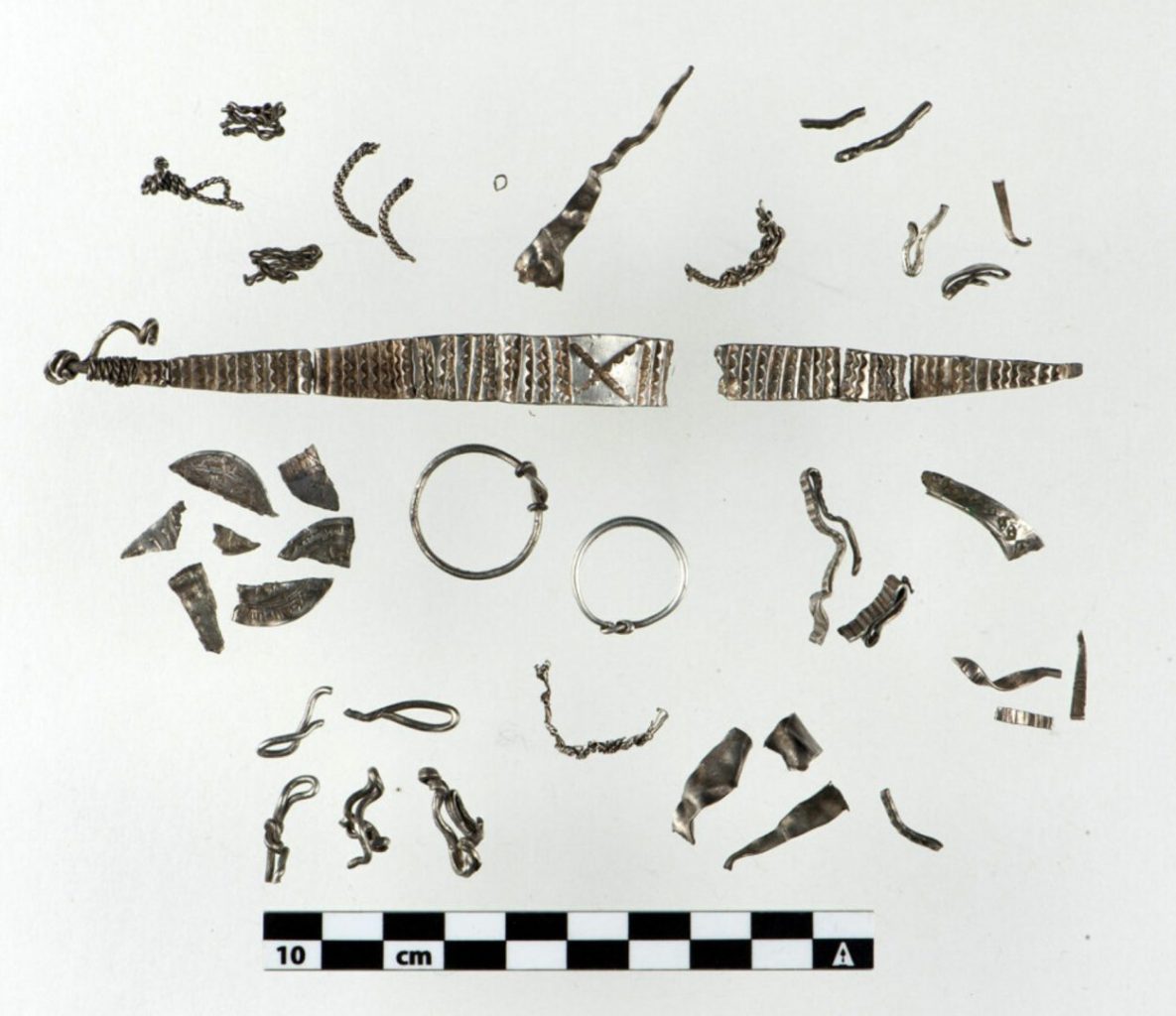A large Viking Age treasure hoard has been discovered by a metal detectorist at the Kongshaug plateau in Stjørdal, Norway.
The discovery was made by Pawel Bednarski, who first uncovered a small ring he considered insignificant at the time, however, this led to a hoard of silver objects, including coins, bangles, rings and silver wire.
The objects were located two to seven centimetres below the ground, with Mr Bednarski commenting: “The objects were covered in clay, so it wasn’t easy to see what they looked like. It was only when I got home and rinsed off one of the bangle pieces that I realised this was an exciting find.”
Mr Bednarski submitted the artefacts to the county municipality archaeologists for identification, who confirmed that the discovery was from the Viking Age.
In Norway, the use of metal detectors is legal as long as the landowner has given permission. Any discovery must be declared under the Norwegian Cultural Heritage Act, with pre-medieval and medieval objects (up to AD 1537) automatically becoming state property. The Ministry may decide on a reward, to be divided equally between the finder and the landowner.
The hoard consists of 46 silver objects, mostly fragmented silver called hacksilver or hacksilber, which was generally used as bullion or as currency by weight in antiquity. Apart from two complete finger rings, the find includes Arab coins, a braided necklace, several bracelets and chains, all broken into small pieces.
Birgit Maixner, an archaeologist and researcher at the NTNU University Museum said: “This find is from a time when silver pieces were weighed and used as means of payment. This system is called the ‘weight economy’ and was in use in the transitional period between the earlier barter economy and subsequent coin economy.”
How the hoard came to be buried is unknown, it is possible that the owner deposited them for safekeeping with the intention for later recover, however, the hoarder sometimes died or was unable to return for other reasons (forgetfulness or physical displacement from its location) before retrieving the hoard.
“We can see that the owner prepared himself for trading by dividing the silver into appropriate weight units. The person in question had access to complete broadband bracelets, a primary Danish object type, which could indicate that the owner was in Denmark before travelling up to the Stjørdal area,” says Maixner.
Header Image Credit : Birgit Maixner







